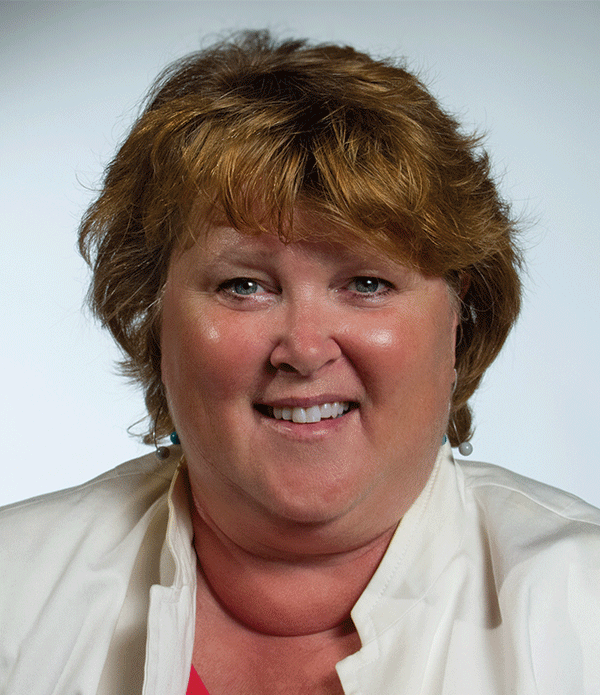
Karen Pollitz, a three-time cancer survivor and health insurance expert, shares how the Affordable Care Act affects patients and survivors. Photo courtesy of the Henry J. Kaiser Family Foundation
As a three-time cancer survivor, Karen Pollitz has significant experience navigating a complex health insurance system while facing a difficult diagnosis. “I had hundreds of claims for all the different services and drugs and treatments that I needed,” she says. Her personal experiences in the health care system have informed a career in which she has studied private health insurance, particularly how it affects people with pre-existing conditions. Pollitz is now a senior fellow at the Henry J. Kaiser Family Foundation in Washington, D.C.
Before the Affordable Care Act (ACA) went into effect, people with a history of cancer or other pre-existing conditions often struggled to find affordable health care. If these people didn’t have coverage through an employer or through a public program such as Medicaid, insurers could turn them down or refuse to cover their treatments. The new health care law has started to address that, preventing insurers from denying coverage to individuals with pre-existing conditions or charging them higher premiums. More than 8 million people signed up for coverage in the Health Insurance Marketplace during the 2014 open enrollment period that ended March 31.
Pollitz works for Kaiser’s Program for the Study of Health Reform and Private Insurance, tracking implementation of private market reforms. She also worked for more than a year for the U.S. Department of Health and Human Services and focused on consumer-protection issues related to the ACA. She spent more than a dozen years at Georgetown University in Washington, D.C., where she was a research professor at the Health Policy Institute. She recently spoke with Cancer Today about the ACA and how it affects cancer patients and survivors.
CT: How does the ACA affect the cost of cancer treatment and follow-up for patients?
POLLITZ: The ACA requires that patients have an absolute limit on cost sharing, which is what the patient has to pay for services, such as deductibles and copays. It’s $6,350 a year per person, or $12,700 for a family. That’s still a lot of money, but even with good health insurance, out-of-pocket costs previously could have been higher than that in a year. Past limits didn’t include your copays for drugs, for example. So you could have reached your out-of-pocket limit on a plan, but still have had to take your credit card out when you had to fill your prescriptions.
CT: Recent media reports indicate that many major cancer centers were not included in some of the networks’ new health plans. How much of a problem is this right now?
POLLITZ: There aren’t good data at this point about the details of the networks—which cancer centers are in and which cancer centers are out. It’s also not clear why.
Plans that restrict your coverage to certain doctors or cancer centers are supposed to have adequate networks so you can get the care that you need. In addition, they should have exceptions policies, so that if you need to go to an out-of-network provider for a treatment or to see a specialist, you and your doctor can make the case through an appeal to the insurance company.
CT: Now that a person can more readily purchase health insurance coverage without needing to be employed, how does that affect the work patterns of cancer patients?
POLLITZ: The ACA didn’t change rules about medical leave. But if you’re too sick to work and you lose your eligibility for health benefits, you can apply for coverage in the marketplace. If your income has been cut back, chances are you’re going to qualify for subsidies. The benefits should be pretty comprehensive, not necessarily identical to what you had before, but you shouldn’t just drop off a cliff into a horrible abyss.
If you’re very low income, you would qualify for Medicaid, but the big exception there is that in 2012, when the Supreme Court ruled on the constitutionality of the ACA, it ruled that states are not required to expand eligibility of Medicaid as mandated under the ACA. About half the states didn’t. If your income drops below the federal poverty level and you live in a state that hasn’t expanded Medicaid, you fall off the coverage map and there isn’t affordable coverage available. The subsidies in the marketplace kick in at the poverty level income and above.
It’s unfortunate, and many people expect that coverage gap will gradually go away. But right now it’s a pretty big gap in about half the states.
CT: What additional health care changes do you expect for cancer patients and survivors?
POLLITZ: Advocates for cancer patients and survivors are trying to really dig into many important details about the implementation of the ACA: what plans cover, prescription benefits, how many cancer drugs are covered, how many aren’t and what that means for people.
When people feel like there is still a shortcoming in their access to coverage or the affordability of coverage, it’s worth it to speak to their insurer in case the problem can be corrected immediately. Remind the advocates and policymakers who represent you that it’s not time to rest. There is still a lot of work to be done.
Cancer Today magazine is free to cancer patients, survivors and caregivers who live in the U.S. Subscribe here to receive four issues per year.




